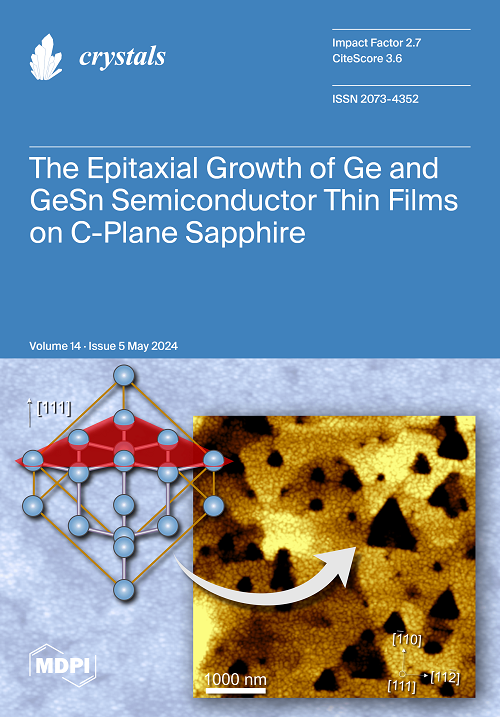Analysis of the Anisotropic Cyclic Material Behavior of EN AW-1050A H24 Derived from Strain-Controlled Testing Using a Clip-On Extensometer and an Optical System
IF 2.4
4区 材料科学
Q2 CRYSTALLOGRAPHY
引用次数: 0
Abstract
Due to its good conductive properties, unalloyed (pure) aluminum, such as EN AW-1050A H24, finds new fields of application in electromobility. To optimize components, the cyclic material behavior must be understood and described precisely as a foundation of a proper fatigue life estimation. Various cyclic tests were performed to not only derive the cyclic parameters to describe the material but also to find the most suitable procedure to deal with the challenges faced during the experiments. The main point of interest is the comparison between a surface-mounted clip-on extensometer and an optical system both used for strain control in cyclic tests. For the analysis of the anisotropic behavior of EN AW-1050A H24, un-notched flat specimens were extracted from sheet metal lengthways and crossways in respect to the rolling direction. While the cyclic material behavior for specimens of both directions of extraction is characterized by cyclic softening in general, the specimens extracted crossways show a strain-amplitude-dependent cyclic softening with strong strain localization especially at the contact points of the knives of the clip-on extensometer leading to an increased quantity of invalid experiments as well as sudden fractures. In the study, it was possible to show the benefits of a contactless optical strain control system when dealing with very soft metallic materials such as EN AW-1050A H24.使用夹式拉伸计和光学系统进行应变控制测试得出的 EN AW-1050A H24 各向异性循环材料行为分析
由于具有良好的导电性能,非合金(纯)铝(如 EN AW-1050A H24)在电动汽车中找到了新的应用领域。为了优化组件,必须准确理解和描述材料的循环行为,以此作为正确估算疲劳寿命的基础。我们进行了各种循环试验,不仅要得出描述材料的循环参数,还要找到最合适的程序来应对试验过程中面临的挑战。主要关注点是表面贴装夹式拉伸计和光学系统之间的比较,两者都用于循环测试中的应变控制。为了分析 EN AW-1050A H24 的各向异性行为,从轧制方向相对于纵向和横向的金属板上提取了未切口的扁平试样。两个方向提取的试样的材料循环行为一般都表现为循环软化,而横向提取的试样则表现为随应变振幅变化的循环软化,特别是在夹式拉伸计刀具的接触点处,应变局部性很强,导致无效实验和突然断裂的数量增加。在这项研究中,我们可以看到非接触式光学应变控制系统在处理 EN AW-1050A H24 等非常软的金属材料时的优势。
本文章由计算机程序翻译,如有差异,请以英文原文为准。
求助全文
约1分钟内获得全文
求助全文
来源期刊

Crystals
CRYSTALLOGRAPHYMATERIALS SCIENCE, MULTIDIS-MATERIALS SCIENCE, MULTIDISCIPLINARY
CiteScore
4.20
自引率
11.10%
发文量
1527
审稿时长
16.12 days
期刊介绍:
Crystals (ISSN 2073-4352) is an open access journal that covers all aspects of crystalline material research. Crystals can act as a reference, and as a publication resource, to the community. It publishes reviews, regular research articles, and short communications. Our aim is to encourage scientists to publish their experimental and theoretical results in as much detail as possible. Therefore, there is no restriction on article length. Full experimental details must be provided to enable the results to be reproduced. Crystals provides a forum for the advancement of our understanding of the nucleation, growth, processing, and characterization of crystalline materials. Their mechanical, chemical, electronic, magnetic, and optical properties, and their diverse applications, are all considered to be of importance.
 求助内容:
求助内容: 应助结果提醒方式:
应助结果提醒方式:


